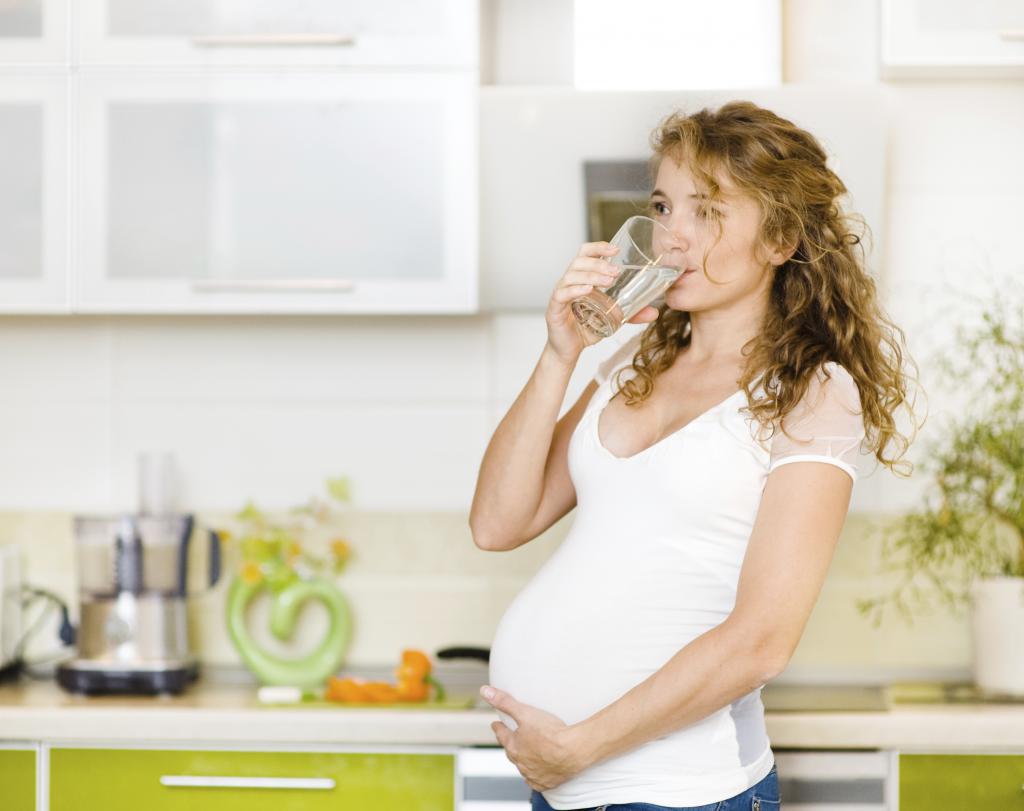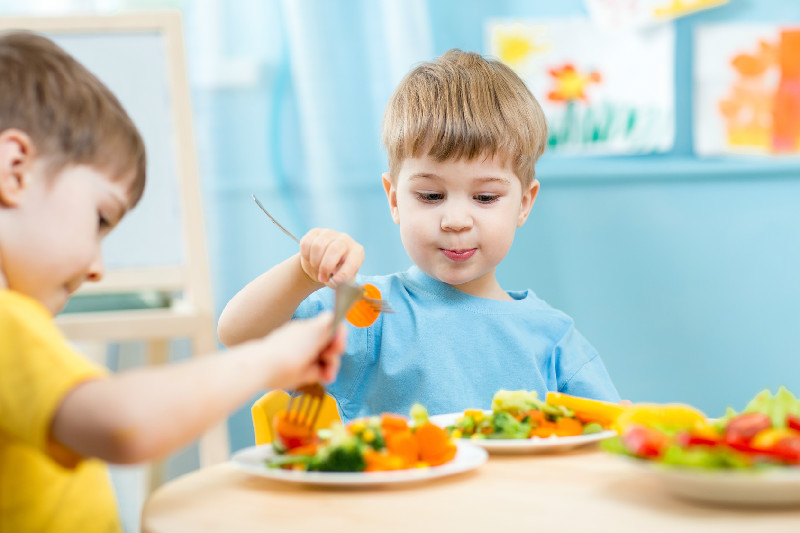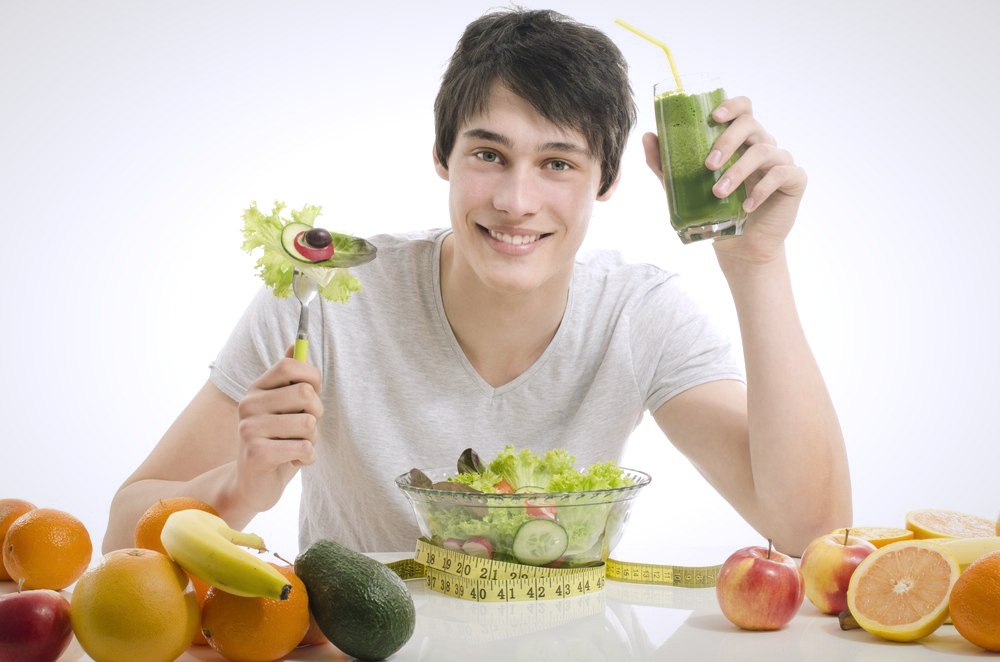Pyelonephritis is an inflammatory infectious disease of the kidneys, which is accompanied by severe pain and poor health. It is easier to prevent than to cure. And if a person falls ill with pyelonephritis, then he will have a long course of therapy. And also following a strict diet. With pyelonephritis, you need to eat in accordance with medical recommendations and regimen in order to create optimal conditions for the functioning of the genitourinary system. And now it’s worthwhile to tell in detail about this topic, as well as to paint a diet.
Nutrition rules
So, here is what the special dietary regimen for pyelonephritis is aimed at:
- Better kidney function. Food consumed should not have a maximum load on them, but sparing.
- Normalization of metabolism. Moreover, both in the kidneys and in other internal organs.
- Reduced edema.
- Excretion of toxins, nitrogenous substances and salts.
- Lowering blood pressure.
The diet for pyelonephritis corresponds to table No. 7 according to the Pevzner table. In short, the regimen is aimed at reducing the amount of protein consumed, increasing the volume of vitamins and maintaining the previous norm of fats and carbohydrates. If translated into numbers, then the daily recommendations look like this:
- Free liquid - 2-3 liters.
- Fats - 90-100 g. At the same time, 25% should be vegetable.
- Proteins - 80 g. Of this amount, 50-60% should be animals.
- Carbohydrates - 400-450 g. They should account for about 80-90 grams of sugar.
In this mode, the daily calorie content will be about 2400-2700 kcal.

Features of the mode
With pyelonephritis, the diet menu can be varied, however, dishes should still meet the following characteristics:
- Their temperature should be comfortable. Do not eat too cold or too hot dishes.
- They can not add spices, spices, horseradish, mustard, sauces, etc.
- The consistency should be liquid or puree. You can eat finely chopped foods. But no large pieces.
- Dishes can be stewed, or may consist of steamed or cooked foods. You will have to refuse fried and baked.
Still have to go to a fractional power system. The entire daily amount of food should be divided into 6 receptions with equal intervals. Thanks to this, it will be possible to ensure a uniform load on the kidneys and contribute to the speedy normalization of their functions.
In addition, with such a system, carbohydrates, fats and proteins enter the body almost continuously, a little by little. And this ensures their maximum assimilation.
What will have to refuse?
This is another issue that affects adults with pyelonephritis. The diet menu, as already mentioned, can be varied, but you still have to give up a lot. The “stop list” is as follows:
- Thick rich soups with fish, mushrooms, legumes and meat.
- Butter bread and pastries. Is it hard to abandon this? Then you have to bake completely salt-free bread.
- Fatty, smoked, salted fish and canned food.
- Legumes and all products containing them.
- Onion, radish, sorrel and radish.
- Pickles and canned vegetables.
- Mushrooms in any form.
- Seasonings, marinades, sauces, spices, salt.
- Strong coffee and tea.
- Confectionery.
- Fat sour cream.
- Chocolate.
It is allowed to consume fermented milk products in small quantities. They have many vitamins, but also have protein. So you need to choose foods with minimal fat content and do not forget to control portions.

How can I diversify the diet?
According to the diet, a table for pyelonephritis in adults can consist of the following dishes:
- Boiled low-fat bird, fish and meat.
- Cereal soups on vegetable broth.
- Yeast products (pancakes, pancakes).
- Boiled eggs or steam omelet. No more than one per day.
- Small pasta.
- Cereals (oat and buckwheat is most useful).
- Fresh fruits. You can eat mousses made from them, jam, ice cream.
- Honey.
- Melons and gourds.
- Vegetables: potatoes, zucchini, pumpkin, greens, beets, carrots.
- Dairy, vegetable, sour cream and tomato sauces.
- Milk soups.
- Saltless bread.
It is allowed to season food in a small amount with vinegar, lemon juice, cinnamon, vanilla, butter and vegetable oil.
Of drinks, you can drink fruit drinks (cranberry is most useful), green, black and herbal teas (not strong), freshly squeezed juices, jelly, mineral waters with a minimum content of sodium salts, as well as a rosehip broth.

Breakfast
Now you can consider the approximate menu recommended by people who follow a diet with pyelonephritis. What dishes are best prepared, usually tells the doctor after prescribing treatment, taking into account the individual characteristics of the patient and preferences. But getting familiar with the examples is also helpful. So breakfast can be like this:
The first morning reception.
- Main course: semolina with milk, stewed vegetables or light soup of them.
- Additional: sandwiches with small and cheese, vegetable salad or cottage cheese casserole.
- Dessert: gingerbread cookies, biscuit cookies or vanilla wafers.
- Drink: fruit drink, weak tea or compote.
The second morning reception.
- Main course: mashed potatoes, dumplings or buckwheat.
- Additional: boiled fish or chicken, omelet from one egg for a couple.
- Dessert: low-fat yogurt or cottage cheese with sugar and sour cream.
- Drink: cocoa or tea.
Sometimes you can pamper yourself with weak coffee. But not only if the disease has a chronic form, and not with exacerbations. In such situations, in general, you need to limit your diet.

Lunch, afternoon tea and dinner
Subsequent meals, according to the diet for kidney pyelonephritis, may be as follows:
Dinner.
- Main course: borsch with lean meat, stewed cabbage with chicken, pasta with milk sausages.
- Optional: steamed cutlets, boiled fish or chicken roll.
- Dessert: low fat yogurt, half a sweet bun or cookie.
- Drink: tea, fruit drink or fresh.
An afternoon snack.
- Main course: low-fat pudding, sandwiches with boiled sausage or cheese, pancakes.
- Dessert: cookies, waffles or gingerbread cookies.
- Drink: tea, milk or kefir.
Dinner.
- Main course: low-fat pilaf, oatmeal or stewed vegetables.
- Optional: chicken fillet chops, boiled sausage sandwiches or fish fingers.
- Dessert: yogurt, pancakes with honey or cookies.
- Drink: cocoa, compote or juice.
If hunger awakens between meals, you can have a snack. Some fresh fruit or toast from saltless bread is best suited for this.
Recommendations for pregnant women
The diet for kidney pyelonephritis in women bearing a child is slightly different from the diet prescribed for all other patients. They need to strictly follow all the recommendations, since it is not only about their health. If a woman neglects the diet, then this may affect the condition of the fetus.
All harmful is strictly prohibited, even periodic exceptions are not allowed. The diet should be composed of the following products:
- Boiled vegetables.
- Black saltless bread.
- Natural, home-made jelly and berry fruit drinks.
- Boiled or steamed fish, meat.
- Vegetarian soups.
As you can see, a not very diverse diet in women with pyelonephritis and pregnancy. However, the diet should change. Because, otherwise, the body will experience a deficiency of certain useful elements. Therefore, it is important that the doctor, taking into account the position of the woman, draw up a detailed diet, at which compliance the maximum benefit.

Features baby food
What should be the diet for pyelonephritis in adults is understandable. And what kind of diet should be observed for children suffering from this disease? The child’s body is very susceptible to any changes, and this also applies to the food consumed. Here's what parents need to consider:
- It is necessary to give the child diuretic products. These include melons, zucchini, watermelons.
- In the early days, you do not need to feed the baby anything other than fresh fruits, vegetables and liquids. Then you can gradually add milk porridge to the diet.
- Meat and fish are allowed to cook only after the symptoms of the disease disappear.
- The source of the minimum norm of proteins, vitamins and minerals for the child's body are dairy products.
- It is necessary to give honey. Either in pure form, or as part of dishes or drinks.
- Exclude salt from the diet.
- Every day, give one egg.
Naturally, the diet for pyelonephritis in children implies the exclusion of fried and baked dishes from the diet, as well as all of the above.
By the way, meat must be prepared in a special way. First you need to boil it until half cooked. Then lay out, drain the water, pick up fresh, and bring to readiness already in it.
Sample children's menu
When treating the symptoms of pyelonephritis, a diet for a child may include the following dishes:
- Boiled beets and kefir.
- Oatmeal with honey and weak tea.
- Vegetable soup. You can put pieces of meat in it, but you have to cook it separately. You can’t boil soup on such a broth.
- Buckwheat porridge with meat.
- Steam cutlets.
- Vegetable and fruit salads.
- Milk semolina.
- Curd pudding with carrots.
- Buckwheat with milk.
- Vinaigrette with a little oil.
- Boiled potatoes.
- Pasta with low-fat cheese.
In acute or chronic form of the disease, of course, the list of products allowed to the child will be significantly reduced. But if no deterioration is observed, and the forecasts are positive, then you can diversify the diet with sandwiches with cheese and tomato, marmalade, pastille, dried fruits, soups with sour cream, etc.

Diet for chronic pyelonephritis
Unfortunately, a disease of this form can be cured in extremely rare cases. And this process turns out to be very laborious and lengthy. The disease is accompanied by constant lower back pain, especially in wet weather, difficulty urinating and enuresis. Also, it is constantly aggravated, which causes even more discomfort and problems.
Naturally, a person has to constantly, throughout his life, monitor what he eats. Many forever refuse spices, seasonings and spicy dishes. Smoked and fried can only occasionally, in limited quantities, and then not during the period of exacerbation. You also have to wean yourself from salt intake. The maximum allowed is 3 grams per day.
Another diet with chronic pyelonephritis involves the rejection of sorrel, radish, garlic, onions, parsley, radish, horseradish. Also banned are products with preservatives and dyes, frozen foods, alcohol.
And, of course, along with observing the diet, you have to undergo therapy, always dress warmly, regularly undergo examinations and take tests.
What can be made of sweets?
This is an urgent issue for many. Without sweets, it’s really difficult, because everyone knows that this is a source of gastronomic pleasure. So, the diet for pyelonephritis allows the use of the following products that contain glucose:
- Jam.
- Marshmallows.
- Paste.
- Sherbet.
- Figs
- Watermelon.
- Melon.
- Pears
- Apples
- Lingonberry.
- Cranberry.
- Dates.
- Raisins.
- Dried apricots.
- Dried apricots.
- Jelly.
- Yogurt.
You can also include juices in this list. Several types are allowed: pumpkin, apricot, carrot, watermelon and birch.

Dieting is the way to recovery
This is a simple truth. The listed recommendations are very important to observe, since this will help facilitate the work of sick kidneys and reduce the load on the urinary system.
These products have an anti-inflammatory effect, and this accelerates recovery.
Refusal of salt is also the most important condition, since the removal of fluid from the body is faster and more active if a person does not use this supplement.
And the diet helps to normalize the water-electrolyte balance, so that the likelihood of complications is minimized.
And finally, therapeutic nutrition, enriched with vitamins, strengthens the immune system. All this in aggregate speeds up the healing process.